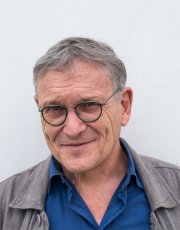
Doctor WHO?
Rony Brauman
You might have thought the project was dead and buried, irremediably discredited by its failure. You might have believed that lessons had been learned and outmoded ideas abandoned. And above all, you might have hoped that on a subject as critical as health, we would not lose all sense of reason. You would be wrong. Our heroic village (or community) health workers are back, looking a bit frayed round the edges perhaps, but still doughty, and being promoted by WHO in the true spirit of the 1978 Alma Ata conference where the slogan “Health for all by 2000” was adopted. Back then, the aim was to ensure access to so-called essential health care and prevention by recruiting health workers in the villages and offering them a few weeks’ training in basic preventive and curative techniques and some (meagre) remuneration. These “barefoot doctors”, central characters in Maoist propaganda after the “Red Guard”, thus gained unhoped for status at a time when their image had already begun to fade in China. Ten years later, the WHO conference in Bamako acknowledged that this strategy had brought us no closer to achieving the intended objective, but said nothing – unfortunately - about why it hadn’t worked. Health care was no longer free-of-charge and community health workers had become less presentable at international forums, that’s all there was to it. But, thanks to the crisis, here they are again, promoted, or rather implicitly rehabilitated by WHO over recent years under the vague label of “primary health care”, a process largely facilitated by the fact that that the disastrous results of the Alma Ata strategy had never been publically acknowledged. Now here they are appearing in the official publications1 , community health workers in the front line in emergencies, carrying out triage and saving the injured. And here they are again identifying vulnerable groups and raising the alert on epidemic trends; and finally, when things are quieter and they have no emergencies to deal with, here they are educating the population on favourable health behaviour, treating the most common illnesses, such as pneumonia (the leading cause of death in children), fighting the propagation of diseases, etc.
It is true that some of the medical procedures carried out by health practitioners can and should be passed over to personnel trained to perform specific tasks: for example, the diagnosis and treatment of simple malaria, using rapid diagnostic tests, or screening for malnutrition or even monitoring patients with stabilised chronic diseases. It is also true that health centres can be efficiently managed with medical assistants (4 or 5 years of higher education) in the role of doctors, as was the case in Uganda in the 1970s at the instigation of the University of Makerere. But it is dangerous to assert that most potentially fatal or disabling pathologies are easy to prevent and treat, and that health workers with just a few weeks' training can replace professional healthcare providers without serious consequence. Otherwise, why not introduce this revolution in Europe? No, this strategy reserved for rural communities in poor countries where the peasants are too dispersed and under-trained to organise themselves into protesting like their town cousins would. This is a blessing for governments who can thus cap their health budgets at an average of 1% of their GDP while being supported by specialised UN agencies and a majority of NGOs: a blessing that allows them to show off their benevolence towards the people in public speeches about “community participation”, “prevention”, “access to health care for all”, while simultaneously practicing the most brutal liberal politics. Inaugurating a “village pharmacy” and appearing in the company of a group of newly-trained community health workers is certainly easier than engaging in the creation of regional health universities and the development of professional health networks. And the fact that WHO supports this system of sub-medicine for the poor, and that NGOs play along with it, is one of the most sickening things about it.
To cite this content :
Rony Brauman, “Doctor WHO?”, 3 septembre 2012, URL : https://msf-crash.org/en/medicine-and-public-health/doctor-who
If you would like to comment on this article, you can find us on social media or contact us here:
Contribute
